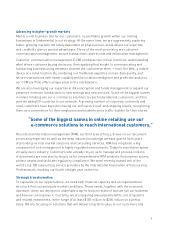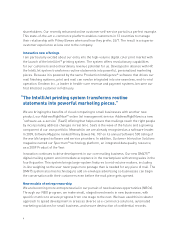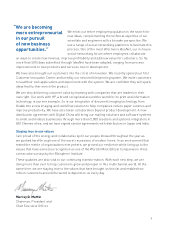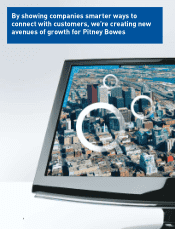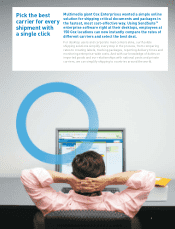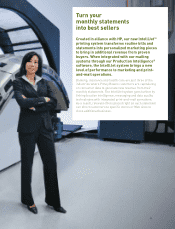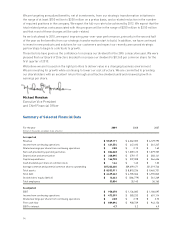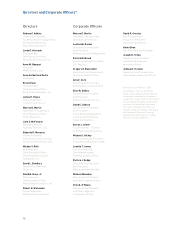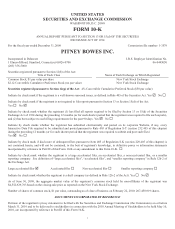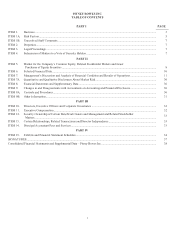Pitney Bowes 2009 Annual Report Download - page 15
Download and view the complete annual report
Please find page 15 of the 2009 Pitney Bowes annual report below. You can navigate through the pages in the report by either clicking on the pages listed below, or by using the keyword search tool below to find specific information within the annual report.
13
The year 2009 provided unprecedented challenges to the global economy, altering normal business
cadence and significantly disrupting business access to capital. Through this period Pitney Bowes
remained a strong, profitable company that continued to generate strong free cash flow, maintain
unencumbered access to capital, and provide an excellent dividend to its shareholders.
While remaining a financially strong company, we were impacted by the economic downturn and
experienced declines in both our revenue and adjusted earnings from continuing operations during the
year. Despite these challenges, we continued to advance our initiatives to reduce our fixed cost structure,
invest in new products and services, and build new partnerships for the future. Even after our investments
in the business, we were able to reduce our selling, general and administrative expenses by more than
$170 million when compared with the prior year.
Our revenue for the year was $5.6 billion, a decline of 11 percent, of which more than 2 percent was
related to unfavorable currency impacts. In 2009, our adjusted earnings per share was $2.28 per diluted
share. Our earnings per diluted share from continuing operations on a GAAP basis was $2.08, which
includes pretax charges of $49 million, or $0.15 per diluted share, related to the strategic transformation
program we initiated in the third quarter of 2009. Our GAAP earnings also include $0.06 per diluted share
for a non-cash tax charge associated with out-of-the-money stock options, and a $0.01 benefit related to
certain leveraged lease transactions in Canada.
We again generated strong free cash flow. For the year our free cash flow was $889 million as a result
of aggressive management of capital expenditures and lower levels of finance receivables. We paid
$298 million in dividends to our shareholders and used a portion of our free cash flow to reduce debt
by $242 million from year-end 2008. In addition, our liquidity position remains solid and we continue to
maintain strong investment-grade credit ratings.
Despite the challenging economic environment, several areas of the company demonstrated strong
performance. Mail Services achieved both positive revenue and profit growth as it continued to gain market
share. The benefits of our cost management actions were also evident in the results of our software,
management services and marketing services businesses, which all achieved higher profit as well as profit
margins despite lower year-over-year revenue. The global mailing and production mail businesses were
adversely impacted by lower customer capital spending and declines in mail volumes in key end markets.
In November, we provided an update on the series of initiatives we designed to transform and enhance
the way we operate as a global company. These initiatives, which we expect to complete over the next two
years, include:
• Implementation of enterprise-wide systems and common platforms to improve and streamline
corporate-wide processes.
• Enhanced use of technology to enable the company’s customers to more easily interact with
Pitney Bowes when and how they choose.
• Expansion of the company’s agile workforce strategy to be closer to our customers and rationalize
our worldwide facilities requirements.
• Utilization of enhanced procurement processes.
• An increase in shared services across business units, including an increase in outsourcing
relationships.
Financial Highlights
from Our CFO
Michael Monahan
Executive Vice President
and Chief Financial Officer


